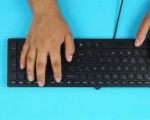Step-by-Step Guide on How to Boot Your Dell Computer from USB
- Introduction
- Preparing for USB Boot
- Accessing the BIOS Settings
- Setting Up USB Boot on Dell
- Common Issues and Solutions
- Conclusion
Booting from a USB drive can be incredibly useful, whether you're trying to install a new operating system, run diagnostics, or recover data. If you have a Dell computer and want to learn how to boot from a USB device, you're in the right place. This guide will walk you through the process, from preparing your USB drive to accessing your Dell's BIOS and setting the correct boot order.
Preparing for USB Boot
Before booting from USB, you need to ensure your USB drive is ready. Here are a few steps to follow:
- Check USB compatibility: Make sure the USB drive you are using is bootable. You can create a bootable USB drive using tools like Rufus or the Windows Media Creation Tool.
- Back up data: If you're installing a new operating system or performing a clean installation, remember to back up any important data from your computer.
- Choose the right USB port: It's important to plug your bootable USB drive into a USB 2.0 port if possible, as some older Dell computers have better compatibility with these ports.
Accessing the BIOS Settings
The BIOS (Basic Input/Output System) is where you can change boot options for your Dell computer. To access it, follow these steps:
- Power off your Dell computer: Completely shut down your computer before proceeding.
- Press F2 during startup: As soon as you press the power button, repeatedly press the F2 key to enter the BIOS menu. If you miss the prompt, simply restart and try again.
- Navigate to Boot Options: In the BIOS menu, use the arrow keys to navigate to the "Boot" tab, where you can change the boot order.
Setting Up USB Boot on Dell
Once you have accessed the BIOS, you can configure your Dell to boot from a USB device:
- Change Boot Priority: Under the "Boot" tab, look for "Boot Priority" or "Boot Sequence." Use the arrow keys to move the USB device to the top of the list.
- Enable USB Boot: Some Dell models may require you to enable the USB boot option. Look for a setting like "Boot from USB" or "USB Boot" and make sure it is set to "Enabled."
- Save and Exit: After setting the USB drive as the first boot device, save the changes and exit the BIOS by pressing F10. Confirm by selecting "Yes" to save the changes.
Common Issues and Solutions
Although the process is usually straightforward, you might encounter a few issues. Here are some common problems and their solutions:
- USB Drive Not Recognized: Make sure the USB is correctly formatted and that it's plugged into a USB port that supports booting (preferably a USB 2.0 port).
- Boot Order Not Saving: If the boot order doesn't save, check for a setting in the BIOS that resets the changes, or try disabling "Secure Boot" temporarily.
- Operating System Not Booting: Double-check that your USB is bootable. You can test it on another machine to ensure it's set up properly.
Conclusion
Now you know how to boot your Dell computer from a USB drive! With this guide, you can easily prepare your USB drive, access your BIOS, and adjust your boot order. Whether you're installing a new OS, performing maintenance, or troubleshooting, booting from USB on a Dell computer is a valuable skill to have. If you’re looking for high-quality computer accessories or tech products, check out Ninja Stik for more options.





























